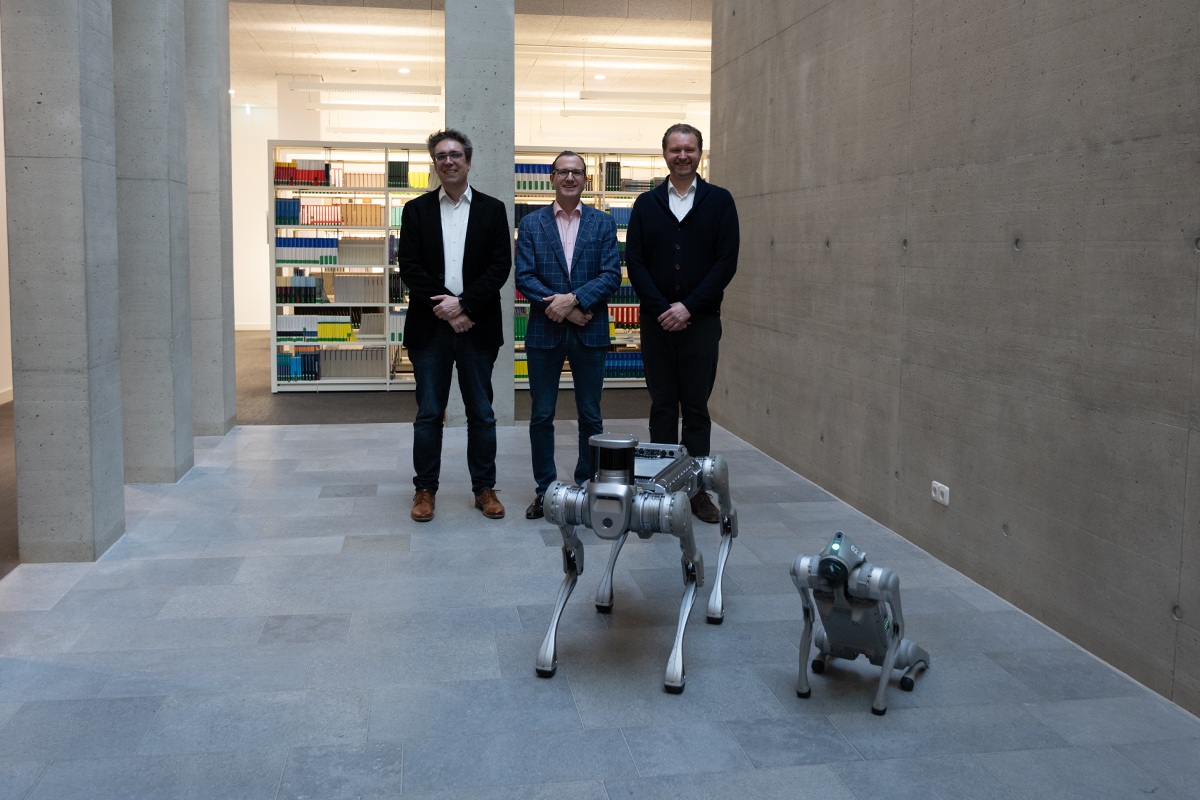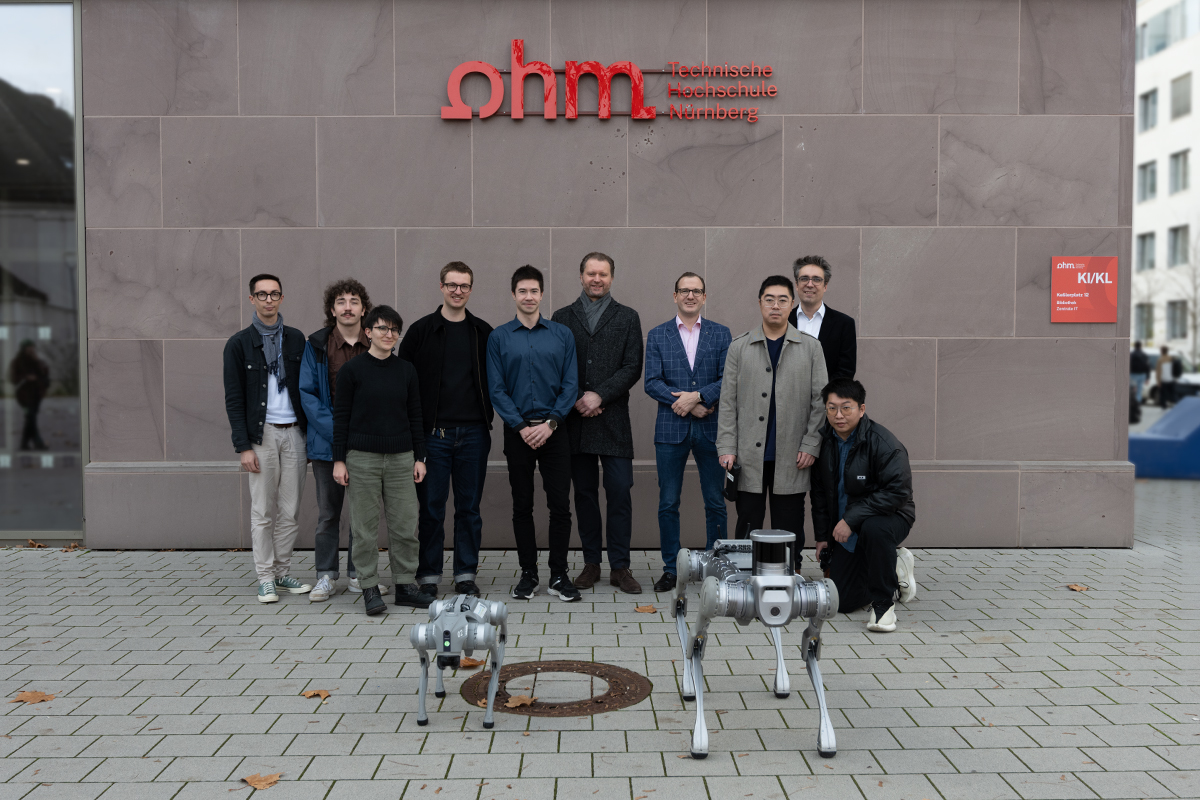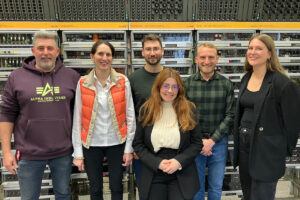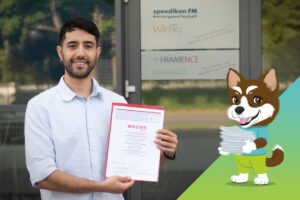When two four-legged robots begin trotting through the hallways of the Ohm, it’s far more than a technical curiosity. With the donation of the Unitree Go2 and B2 models, the speedikon FM Group is sending a clear signal: practical research matters, students deserve access to real-world technology, and Bavaria is investing in its digital future.
A Commitment to Applied Research
The handover builds on years of collaboration between the company group and the university—especially with the Interactive Media Technology Lab at the Faculty of Computer Science. On 11 November 2025, the two robotic systems were officially presented on campus.
What may seem like a symbolic gesture is in fact a strategic investment in education and innovation. The robots will support teaching, applied research, and student projects, serving as real-world testbeds for autonomous navigation, AI-driven inspection, and automated digital capture of buildings.
“With this donation, we are creating a bridge between industrial practice and academic research. Together, we’re shaping the future of autonomous robotics in industrial environments—from the software platform all the way to real applications,” says Adrian Merkel, CEO of the speedikon FM Group. “Our aim is to give students and researchers the opportunity to work with cutting-edge technology—hands-on, interdisciplinary, and geared toward the future.”

Robotics That Truly Moves
Unitree’s four-legged robots are technological showpieces:
- The nimble Go2, weighing 15 kilograms and measuring 70 centimeters, can sprint through indoor and outdoor environments at speeds of up to 5 meters per second.
- The robust B2, at 60 kilograms and 109 centimeters, can carry loads of up to 40 kilograms and operates for more than five hours on a single charge.
Both models come equipped with 4D LiDAR sensors, AI navigation modules, and real-time data processing capabilities. Their versatility makes them ideal for supporting current research at the intersection of robotics, AI agents, and software engineering at the Ohm.

A Student Magnet—and a Research Catalyst
“These robots are more than research tools. They are learning platforms and catalysts for innovation,” says Prof. Dr. Thomas Voit, Dean of the Faculty of Computer Science. “They allow our students to experiment directly in real-world environments and understand how sensors, software, and autonomy interact.”
Prof. Dr. Bartosz von Rymon Lipinski, head of the Interactive Media Technology Lab, adds: “This strengthens the attractiveness of our university and supports Nuremberg’s role as a leading technology location in Bavaria.”
Beginning next year, the robots will join the first research and development projects within the lab. Working closely with the speedikon FM Group, researchers will explore application-oriented scenarios such as:
- Autonomous navigation in unfamiliar, dynamic environments
- Visual recognition of places and objects in complex technical settings
- Explainable world modeling and reliable human-machine communication

Industry Meets Academia
“Our cooperation with the Ohm shows that progress is a joint effort,” Merkel continues. “We view this donation as an investment in education, research, and the innovative strength of the region.”
The speedikon FM Group—which includes speedikon FM AG, Innomatik, WiriTec, and Framence—brings together expertise in software, sensors, and artificial intelligence. In collaboration with the university, this creates an interdisciplinary ecosystem where industry knowledge and academic insight reinforce one another.
Picture: speedikon FM AG




